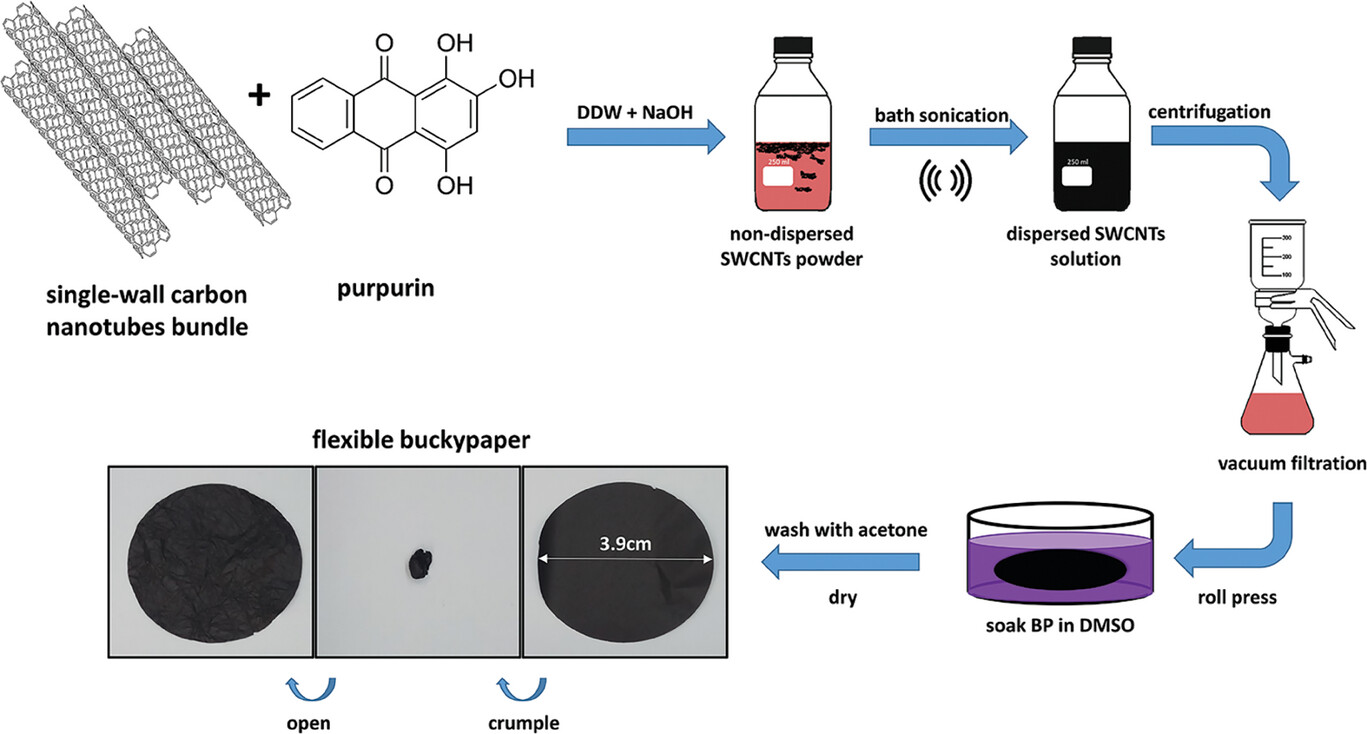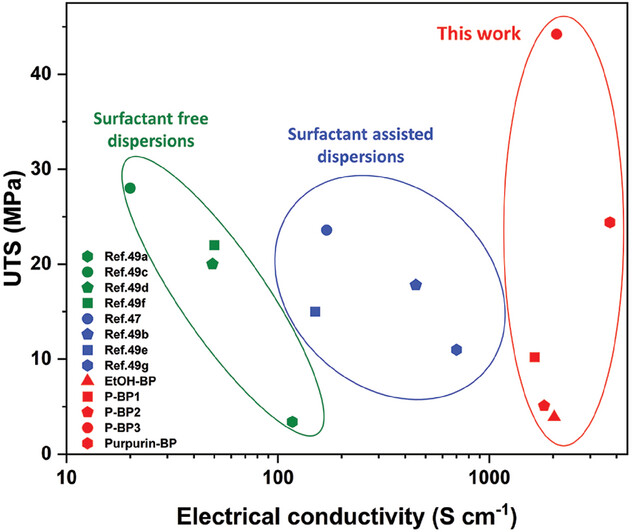| Dec 22, 2023 |
Simple, sustainable path unlocked to long-sought superior carbon nanotube materials
(Nanowerk News) Carbon nanotubes have long tantalized researchers with their extraordinary mechanical and electronic properties. As one-dimensional nanostructures with remarkable mechanical strength and electrical conductivity, CNTs have been eyed for next-generation composites, energy storage devices, sensors and more. Yet realizing their promise has proven an enduring challenge.
|
|
CNTs have ultra-high surface energy and readily form large bundles rather than remaining as individualized tubes, severely compromising resultant material properties. Exfoliating these bundles, particularly in solution, has remained an immense difficulty despite intense R&D efforts over 30+ years employing covalent and noncovalent functionalization strategies.
|
|
Covalent approaches disrupt the CNTs’ pristine sp2 carbon networks, damaging their intrinsic properties. Noncovalent methods like surfactants and polymers have had limited success in debundling smaller diameter single-wall CNTs (SWCNTs), especially longer high aspect ratio tubes preferred for optimal conductivity and strength. And virtually all tactics have struggled to exfoliate specific SWCNT types, hindering enrichment in metallic SWCNTs boasting far higher conductance than their semiconducting counterparts.
|
|
Now, chemists at Israel’s Weizmann Institute of Science have demonstrated a facile new aqueous solution processing route to successfully exfoliate SWCNTs using a common organic dye molecule - purpurin.
|
|
They published their findings in Advanced Functional Materials ("Highly Conductive Robust Carbon Nanotube Networks for Strong Buckypapers and Transparent Electrodes").
|
 |
| The fabrication process of Purpurin-BP. Bundled SWCNTs powder and purpurin (1,2,4-trihydroxyanthraquinone) are added to a basic aqueous solution. The solution is then bath sonicated to disperse the SWCNTs, centrifuged, and vacuum filtered to provide a free-standing BP. The BP is then soaked in DMSO to remove excess purpurin. The final product is a flexible BP, which can be crumpled to a ball and restore its original form without visible structural damage. (Reprinted with permission from Wiley-VCH Verlag. The vacuum filtration apparatus image was adapted with permission from https://www.jsgw.com/)
|
|
Through apparent strong selective binding and debundling, this approach yielded SWCNT networks with a 10X higher electrical conductivity of 3726 S/cm along with superior mechanical robustness versus previous solution-based processing methods.
|
|
The exceptional conductivity boost stems from preferential exfoliation of metallic SWCNTs, creating networks with a far higher metallic tube content that in turn enables excellent charge transport.
|
|
But unlike prior attempts with other dyes, purpurin serves as an effective dispersant while largely preserving SWCNT properties. The researchers attribute this to dominant noncovalent interactions arising from the planar dye binding to and helping solubilize the SWCNTs’ graphitic sidewalls.
|
|
Raman spectroscopy revealed changes indicating enrichment in smaller diameter metallic tubes remaining highly crystalline without inducing defects or shifts suggesting charge transfer doping that can also raise network conductivity but wasn’t as evident here.
|
|
Simply mixing inexpensive commercially available SWCNTs and purpurin in basic water, bath sonicating and centrifuging the dispersion, then vacuum filtering it onto a membrane produced a flexible “buckypaper” (BP) strip with a benchmark electrical conductivity among the highest recorded for any CNT material fabricated via wet processing methods.
|
|
In fact, purpurin-exfoliated SWCNT BPs uniquely combine both exceptional conductivity and mechanical durability, with the latter not usually concurrent with the former. This shows promise for integrating such solution-based CNT materials into devices rather than just conductive composites, whereas their fragility has limited applications.
|
|
By tuning filtration conditions, the group also applied their dye technique to create transparent SWCNT networks exhibiting an excellent balance of high transmittance and low sheet resistance rivaling other state-of-the-art carbon nanotube transparent conductive films requiring far more complex processing.
|
|
The simplistic purification-free nature of the developed methodology utilizing inexpensive, abundant ingredients bodes well for enabling scalable manufacturing of enhanced CNT materials geared for real commercial advances, as opposed to previous exotic chemistries posing implementation obstacles.
|
 |
| Ultimate tensile strength (UTS, MPa) versus electrical conductivity (S cm−1) of EtOH-BP, Purpurin-BP, P-BPn (n = 1–3), and previously reported solution-processed BPs without any post-treatment. Green: reported BPs fabricated using SWCNT dispersion in organic solvents without adding surfactant. Blue: reported BPs fabricated using SWCNT dispersion in an aqueous solution with the addition of surfactants. Red: BPs fabricated using SWCNT dispersion in an aqueous solution with the addition of purpurin (this work). (Reprinted with permission from Wiley-VCH Verlag)
|
|
Though unable to best the conductivity, optical transparency, and mechanical integrity of popular but increasingly problematic indium tin oxide (ITO) layers dominating touch screens and displays, the devised dye tactic notably nudges solution-based SWCNT films closer toward feasibly supplanting ITO. In turn, this better positions SWCNT networks as compelling alternatives to resolve ITO’s notorious brittleness, scarcity, and prohibitive cost issues as display sizes continue ballooning.
|
|
Collectively, these latest insights represent a potential breakthrough in unlocking simple, sustainable paths to unlocking carbon nanotubes’ long sought after riches through an innocuous chemical afforded by Mother Nature herself. With swelling commercial interest in exploiting CNTs and concerns over previous synthetic burdens, economically employing non-toxic ambient ingredients to derive exceptional CNT structures sparks optimism of finally realizing their nanotechnological promise.
|


